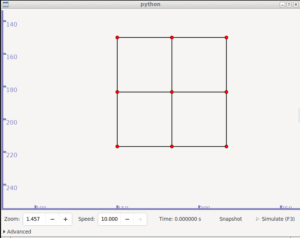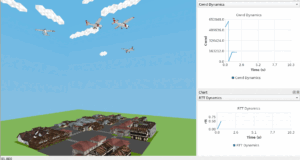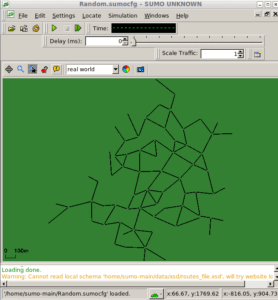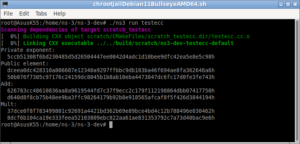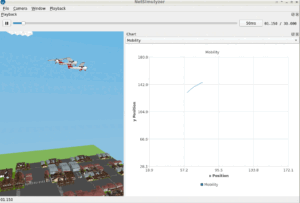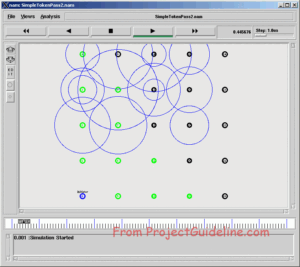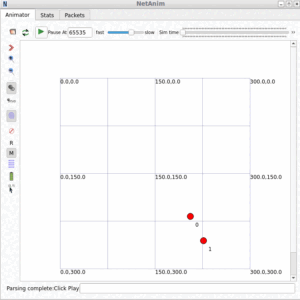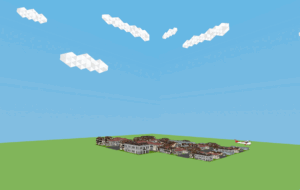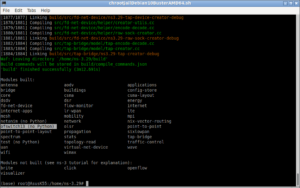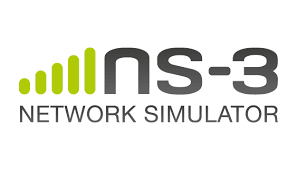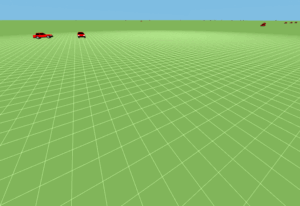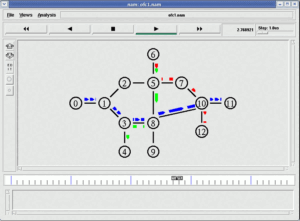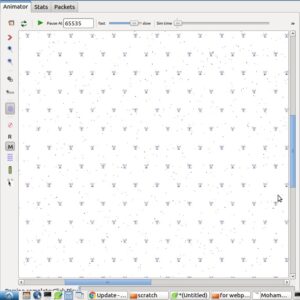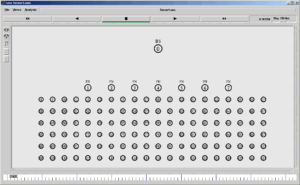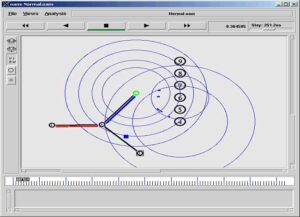RAN (Radio Access Network)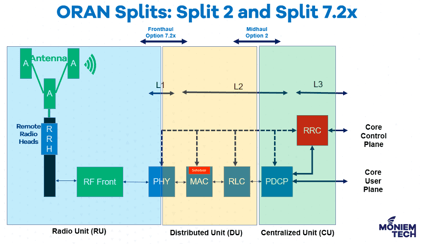
RAN is a key component of a cellular network that provides radio connectivity between mobile devices (such as smartphones, tablets, or IoT devices) and the core network infrastructure. The RAN encompasses the equipment, protocols, and technologies that enable wireless communication over the air interface. The image at the right from[9] shows the architecture of a typical RAN.
The primary function of the RAN is to transmit and receive wireless signals between mobile devices and the network infrastructure. It consists of a set of base stations (also known as cell sites or radio transceivers) strategically placed to provide coverage over a specific geographical area called a cell. Each base station typically consists of antennas, radio frequency (RF) equipment, and signal processing components.
When a mobile device communicates with the network, it establishes a wireless connection with the nearest base station within its coverage area. The base station then relays the signals to the core network, which handles tasks such as call routing, data transfer, and network management.
The RAN is responsible for several critical functions, including:
- Signal transmission: The RAN transmits and receives radio signals to establish and maintain wireless connections with mobile devices.
- Signal modulation and demodulation: It converts digital signals from the core network into analog signals suitable for wireless transmission and vice versa.
- Handover management: The RAN manages the seamless transfer of mobile devices’ connections as they move between different base stations or cells.
- Radio resource management: It allocates and manages radio resources, such as frequencies and bandwidth, to ensure efficient utilization and optimal performance.
- Interference mitigation: The RAN employs techniques to mitigate interference and improve signal quality, such as adaptive antenna systems and interference cancellation algorithms.
RAN technologies have evolved over the years, from analog systems (1G) to digital systems (2G, 3G) and the current generation of Long-Term Evolution (LTE) and 5G networks. The RAN plays a crucial role in providing wireless connectivity, enabling voice calls, data services, and various applications to mobile devices across a wide area.
Open RAN
Open RAN refers to a disaggregated approach to building and operating cellular networks. Open RAN is a new approach to building the RAN that is the foundation of cellular networks. Traditional cellular networks or RAN are typically built using proprietary, integrated hardware and software solutions from a single vendor, which can make it difficult and expensive for operators to upgrade their networks. Open RAN aims to create an open and interoperable ecosystem by separating the hardware and software components of the RAN, which allows operators to choose from a wider range of suppliers and to easily upgrade their networks.
In an Open RAN architecture, the hardware and software functions of the RAN are decoupled, allowing operators to mix and match components from different vendors. This approach promotes vendor diversity, innovation, and competition, as operators are not locked into a single vendor’s solutions. It enables operators to select best-of-breed components and deploy them in a more flexible and cost-effective manner.
Open RAN is seen as a way to promote competition, innovation, and cost reduction in the telecommunications industry. It has gained significant attention and support from operators, governments, and industry organizations worldwide. The ultimate goal of Open RAN is to create an open and interoperable ecosystem that encourages multiple vendors to participate in the network infrastructure market, fostering innovation and driving the evolution of cellular networks.
References
- https://openrangym.com/ran-frameworks/ns-o-ran
- A. Lacava, M. Polese, R. Sivaraj, R. Soundrarajan, B. S. Bhati, T. Singh, T. Zugno, F. Cuomo, T. Melodia, “Programmable and Customized Intelligence for Traffic Steering in 5G Networks Using Open RAN Architectures,” arXiv:2209.14171 [cs.NI], October 2022.
- https://openrangym.com/tutorials/ns-o-ran
- https://github.com/nyuwireless-unipd/ns3-mmwave
- https://www.projectguideline.com/installing-mmwave-ns-3-extension-module-to-simulate-5g-wireless-systems/
- L. Bonati, P. Johari, M. Polese, S. D’Oro, S. Mohanti, M. Tehrani-Moayyed, D. Villa, S. Shrivastava, C. Tassie, K. Yoder, A. Bagga, P. Patel, V. Petkov, M. Seltser, F. Restuccia, A. Gosain, K.R. Chowdhury, S. Basagni, T. Melodia, “Colosseum: Large-Scale Wireless Experimentation Through Hardware-in-the-Loop Network Emulation,” in Proceedings of IEEE DySPAN, December 2021.
- https://openrangym.com/experimental-platforms/colosseum
- https://www.o-ran.org/
- https://www.trentonsystems.com/blog/radio-access-network-ran
- L. Bonati, M. Polese, S. D’Oro, S. Basagni, and T. Melodia, “OpenRAN Gym: An Open Toolbox for Data Collection and Experimentation with AI in O-RAN,” in Proceedings of IEEE WCNC Workshop on Open RAN Architecture for 5G Evolution and 6G, Austin, TX, USA, April 2022.

 Discuss Through WhatsApp
Discuss Through WhatsApp